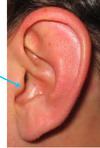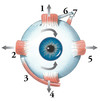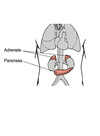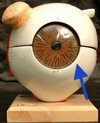Practical 4 Flashcards
(352 cards)
What is the following?

Ventral Horn
(Ventral = anterior)

What is the following?

Anterior Median Fissure

What is the following?

Central Canal

What is the following?

Dorsal/Posterior root

What is the following?

Dorsal Root Ganglion

What is the following?

Gray Commissure

What is the following?

Lateral White Column

What is the following?

Lateral Horn

What is the following?

Dorsal Horn

What is the following?

Posterior median sulcus

What is the function of the Ventral Horn?

Transmission of neural signals
Motor neurons directly to muscles

What is the description of the Ventral Horn?

Part of gray matter, contains somatic motor nuclei

What is the description of the Anterior Median Fissure

The more open ventral fissure of white matter in spinal cord

What is the function of the Anterior Median Fissure?

divide spinal cord in half

What is the middle hole in gray matter?

Central Canal

What is the function of the central canal?

passage way for cerebrospinal fluid (CSF)

What is the sensory root of spinal nerve?

Dorsal Root

What is the function of the Dorsal Root?

Where the interneurons and sensory fibers enter the spinal cord

What is the enlarged area on the dorsal root?

Dorsal Root Ganglion

What is the function of the dorsal root ganglion?

contains cell bodies of neurons

What is the middle portion of gray matter between the two horns?

Gray commisure

What is the function of the gray commisure?

communicates between left and right side of body

What are the components that make up the white columns?
Ventral, Lateral and Posterior
Surrounding the gray matter

What is the function of the white columns?
Tissue through which messages pass between different areas of gray matter
-Provides avenues of communication between different levels of the CNS































































































































































































































































































































